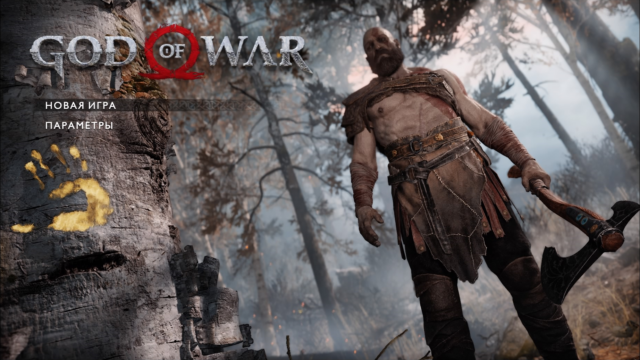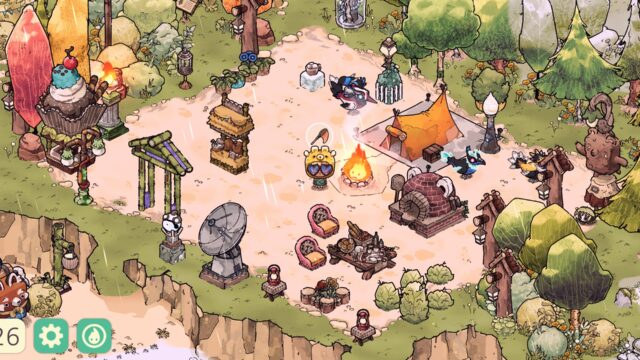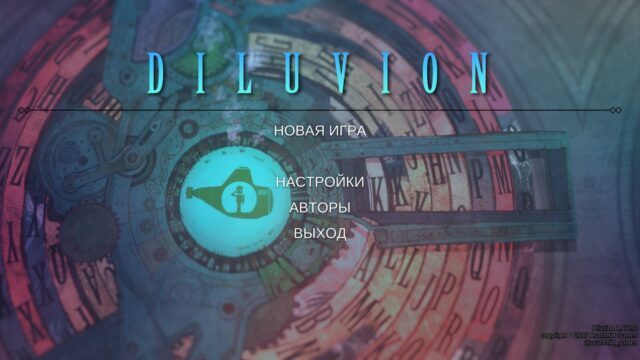Star Wars: Battlefront Review
We seem to have been broadcasting a lot from the perspective of the collective editorial mind here. Let’s make an exception this time, especially since it’s a special occasion. You see, I’m a fan of Star Wars. And before you close this page, let me assure you: I’m not one of those crazy fanboys who have stacks of questionable comics about the universe on their shelves and are ready to name the pilot of the AT-ST during the Battle of Hoth at any time of day or night. I’m closer to those who equally love both trilogies without any disputes, who first learn to play the “Imperial March” on the piano and make sure to set aside time to attend the premiere of a new episode. Although I just realized that I do know who was in that AT-ST after all.
Why is this important? Because it is these people who represented what to expect from Battlefront and got the most enjoyment out of the game.

We should have waited for the opportunity to see “Star Wars” from a different perspective. Not through the eyes of high-ranking Jedi or even through the visor of a Republican commander, but through the eyes of ordinary soldiers. You know, those guys who skillfully avoid the main heroes, die by the dozens off-screen, and faithfully depict those very wars while we figure out who is whose father and who shot first. Maybe you won’t see the drama and plot from this angle, but nowhere else will you feel the spirit of the movie saga as deeply as in the epicenter of the legendary battle, where you have your own small but no less significant role. It is this sense of involvement that Battlefront captures and exploits, more successfully than any other game before it.
Here it all unfolds right before you. The battlefield stretches to the horizon, littered with projectiles and remnants of iconic machinery. In dangerous proximity, the beloved red beams whistle, targeting someone behind you. An enemy fighter zooms overhead with a familiar roar, randomly launching its last torpedo. The radio constantly talks about “rebel scum” and requests reinforcements, while your comrades confidently crush enemy trenches under the cover of an AT-AT. Someone stops and shouts at you, “Come on, let’s go!” but you don’t move because when you come here for the first time, it’s hard not to be stunned by the unexpected. I must admit, that’s what I did – stood there with my mouth open for a good ten seconds, taking in everything with my eyes. There are so many actions in the game, and it’s, well, impressive, to say the least.

DICE has long proven that they can make war beautiful, but in combination with the inherent scale of the saga, it has turned out to be something truly insane. And the credit here, first and foremost, goes to the technical tandem of “graphics + sound”.
Visually, Battlefront is top-notch. Frostbite 3.5 delivers stunning landscapes (photogrammetry is already pleasing us second time), excellent lighting and luxurious little people with rifles, who make no less luxurious “pew-pew” in shootouts. The picture is juicy, natural, and as close as possible to what was shown at exhibitions when skeptics screamed about pre-rendering. You can understand them – everything is so good that it’s hard to believe. And it doesn’t lag, don’t worry.
But without sound design, it would all be in vain. Or rather, without such sound design. Each battle is also an independent audio picture, detailed and grand. From the infamous “pew-pew”, the roar of “tie-fighters”, the explosions of turbolasers, and the details like the creak of a stationary blaster or the crunch of snow underfoot, a whole symphony is formed, no less epic than the famous musical accompaniment. It is thanks to it that the atmosphere constantly stays at the “I love this game” mark, which is easy to confirm by simply closing your eyes. It won’t throw you off track – you can even somewhat navigate the environment, even though you won’t be able to shoot back. And the highest quality of samples tempts you to splurge on a serious acoustic system and please the neighbors. sound of a thermal implosion which, I’ll tell you in secret, I added a little percentage to the final rating. Well, for effects of a squad shield Same, but it doesn’t matter…
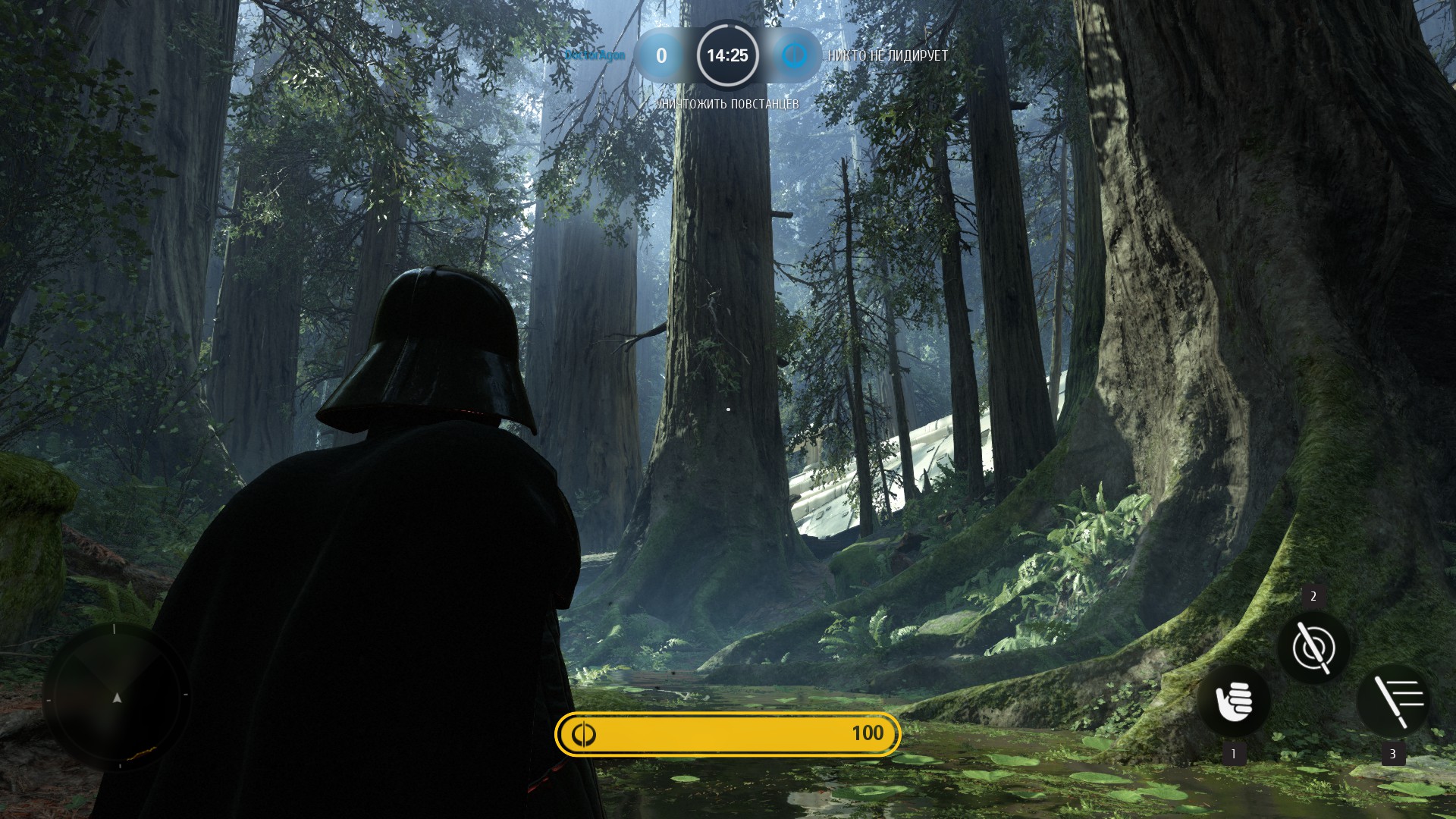
In general, the local battles look and sound exactly as they should, and there is no reason to doubt their persuasiveness and authenticity. Battlefront, perhaps for the first time, managed to capture the spirit of “Star Wars” in an interactive work without any losses.
As for the gameplay – yes, it is Battlefield with a strong arcade flavor. Not in the sense that it is for children and their parents, but in the sense that you don’t have to go through 35 hours of training to get to the most interesting part. If you are familiar with the standard shooter set of “run-jump-shoot”, then you will be comfortable right from the start. Battlefront does not try to overwhelm with the intricacies of mechanics: fun and spectacle are the priority here, while tactical maneuvers take a backseat.

Judging by the lightning at the end of the corridor, Palpatine put on a shocking performance for my comrades.
Two modes serve as confirmation of this, clearly designed as the main ones. The first is “Supremacy”. It is not difficult to guess from the name that teams of 20 people need to compete in sequential capture of control points: holding one grants access to the next, and vice versa. Whoever captures more is obviously talented and will gain more experience today.
Honestly, I didn’t really count on this mode due to its triviality. As it turned out, getting bored there is the most ungrateful thing. The floating front line greatly enlivens the team battle and prevents any camping attempts, while the spawn point, which is extremely close to the combat actions, maintains tension. Achieving clear dominance is impossible because at any moment the enemy can make a desperate dash and throw you back to the very first point. There are, of course, victories in 30-40 seconds, but mostly the struggle is unpredictable and goes on until the very end.
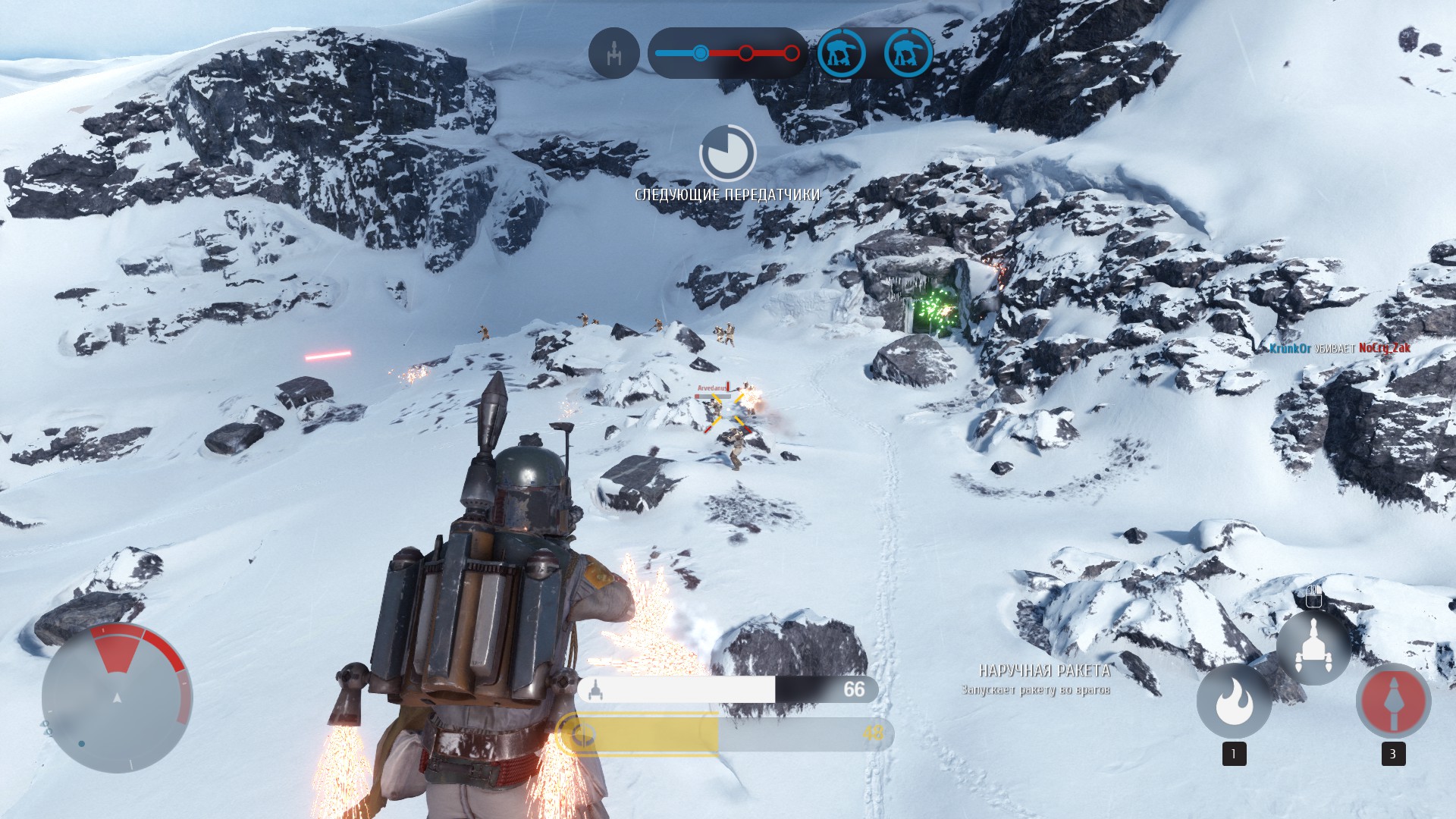
The second mode is already a local exclusive. In “Walker Assault,” the Empire is represented by giant AT-ATs slowly marching towards one of the Alliance’s key objectives on the other end of the map. Whether they reach it or not depends on the rebels, who must capture transmitters to accumulate bomber strikes.
It is somewhat similar to “Supremacy” as it all comes down to the good old control of points, but here the passions truly boil. The time of holding the transmitters directly affects the vulnerability of the Imperial siege machines, so massive battles around them never cease: three or four random grenades regularly fly in, AT-STs are trampled, aircraft hover, and a dozen and a half people shoot at each other. During such clashes, a couple of spectacular moments are guaranteed to be generated, whether it be traditional triple kills and last-second captures or more unique joys of the universe, like a spontaneous duel between Vader and his (spoiler!) son.
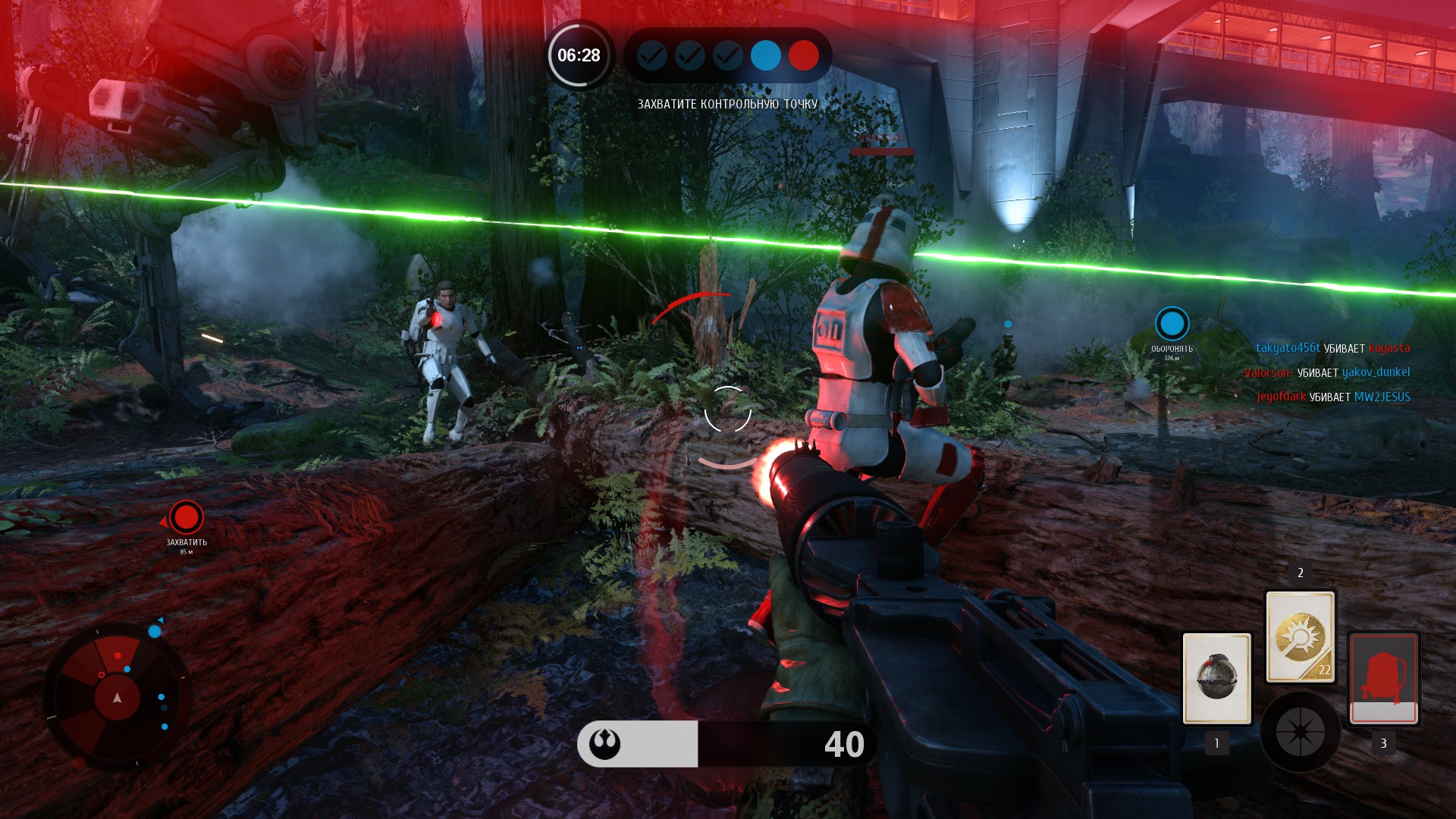
And the coolest thing is when the AT-AT weakens and gets hit. The rebels emit some incomprehensible harmony, all fiercely firing at the walker from all guns, and John Williams, even more fiercely waving his conductor’s baton, to make the scene look as grand and beautiful as possible. That’s it. That’s “Star Wars”.
At least in these two modes, it’s enjoyable to play regardless of the score, team ratios, and other nonsense that we increasingly fill our heads with in online shooters. After a thousand hours in Counter-Strike: Global Offensive and a few runs in Battlefield 4, where every failure is annoying as hell, a game where even losing is fun seems like a real miracle. For once, I don’t care about things like “K/D ratio” and stupid teammates – pff, leave me alone, I’m flying on a X-wing!

About other modes, you won’t find such enthusiastic speeches, although they are, well, normal. It’s just that the maximum number of players in them is much smaller, which leads to competitive nuances coming out, which Battlefront is not quite suited for, and the behavior of teammates noticeably affects the enjoyment. There is a kind of flag capture, essentially an excellent mode where coordinated actions and skilled escort are decisive. There is droid control, where for some reason almost always all 12 people just gather in one place and shoot at each other. A similar problem with “Heroes vs Villains”, which implies interaction between characters and some kind of strategy. Most likely, these modes just need time for players to get used to them and start working together.
“Hero Hunt” is played amusingly, like a Mutant analog from Unreal Tournament: one player becomes the hero, and the other seven try to kill him. The one who makes the fatal shot takes on the role of the victim, and it goes in a circle. To participate in the process in any way, you need to get used to it, but it’s worth it, especially with a company.
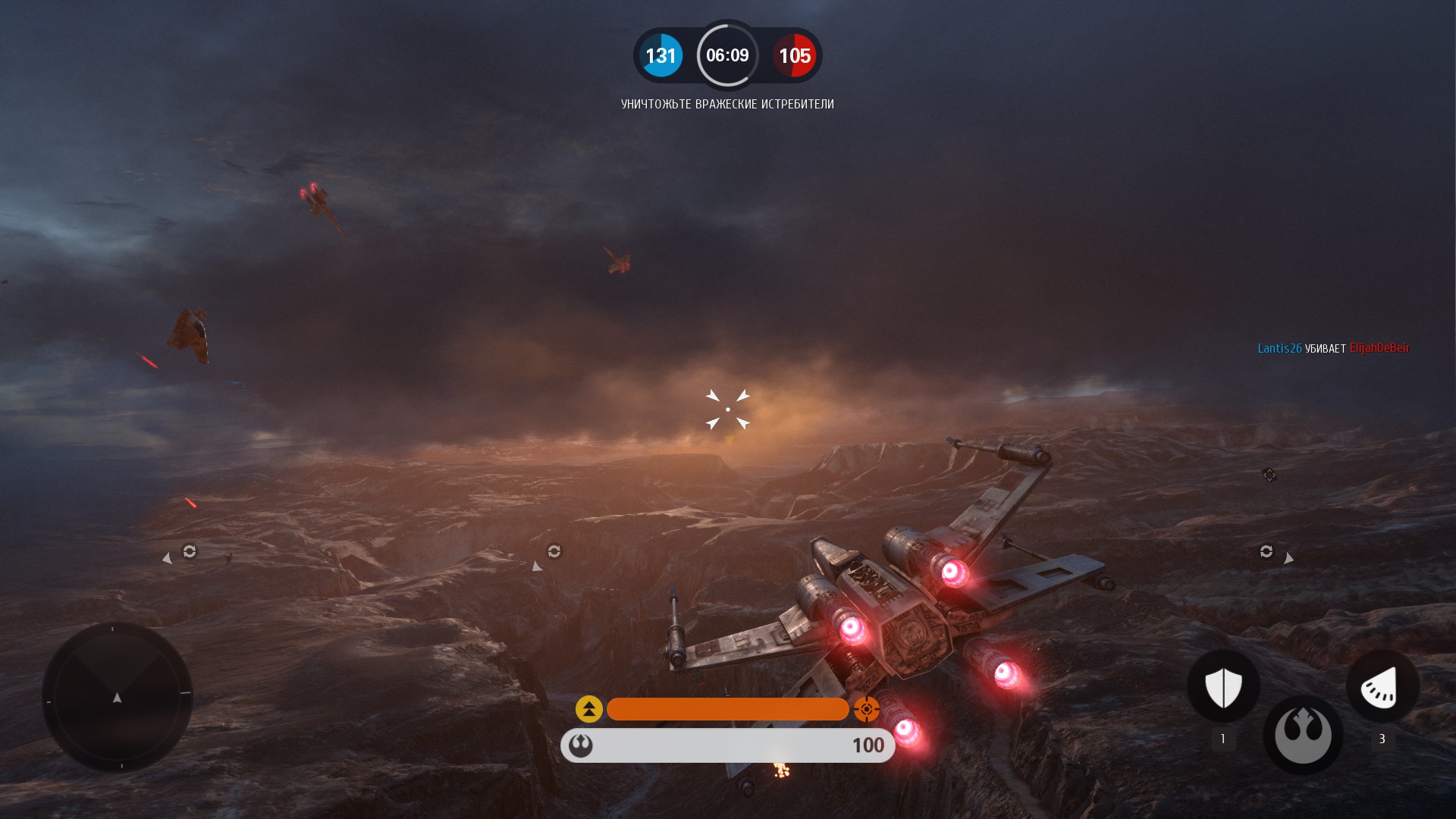
“Squadron”, aviation command battle, it’s good to include from time to time at least for a change of activity. You can’t be satisfied with running and shooting forever, and here not only are there short relaxation sessions, but also bots for mass and warm-up.
You can also play “Drop Zone” from the beta, but after “Supremacy” it’s not as intriguing. But a team deathmatch, even in Africa, a team deathmatch – focused solely on shooting skills, it’s boring and tedious.
And don’t forget about the single-cooperative part. It is, to put it mildly, done just for show: a set of challenges like Modern Warfare 2, duels and survivals can only captivate those who haven’t found the multiplayer button in the menu yet, or those who are really longing for personal SW experience. It’s like taking an old “Battlefront” pirate copy off the shelf and experiencing the specific pleasure of playing against a sluggish AI again. Not that all live opponents are smarter, but they are still… alive.

When you were finally shown on television.
When you superficially look at everything the game has to offer, you involuntarily delve into tactics – and, unfortunately, encounter balance problems. For example, the lovely mode with walkers unexpectedly ruins Endor (oops, sorry, Endor’s Forest Satellite) with its terrible bias towards the Alliance in all parameters. Firstly, rebels are simply not visible due to camouflage, which cannot be said about the Imperials. When throughout the match you are repeatedly killed by bushes, all that remains is to remember the late days in Battlefield: Bad Company 2 with a similar problem.
Secondly, there is only one AT-AT on this map, and it is neither fortified nor accelerated. This is generally offensive, considering the superiority described above. As a result, in a couple of dozen games on Endor, I haven’t seen a single case of the Empire winning. You can turn on the fan and excuse yourself, saying “it’s just like in the movies!1”, but for some reason, canon didn’t prevent them from creating a perfectly feasible loophole for the rebels on Hoth, where they are inherently weaker. There is a strong need for fixes.
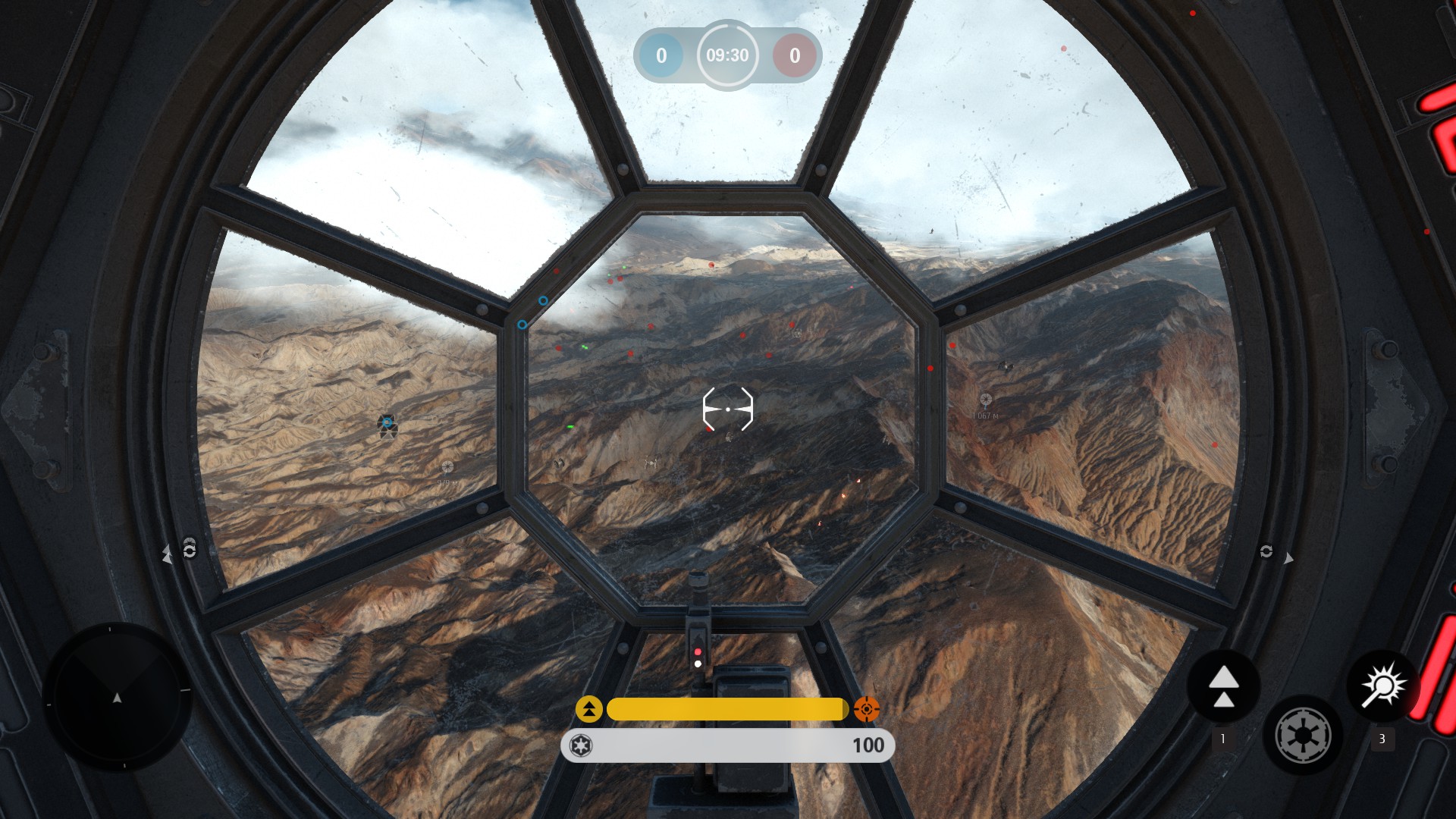
Fortunately, this is the only such major miss. The rest, whether it’s the excessive health reserves of heroic ships in the “Squadron” or the blatantly dishonest DL-44 blaster with questionable overheating speed, with some reservations fit within the bounds of decency and do not hinder the game. Nevertheless, a revision in the future will still not hurt the balance.
There is, in all this mess, ahem, a bright side. The more you delve into the mechanics of Battlefront, the more facets it reveals.
The huge variety in gameplay is brought by the card system with perks. At first, the choice is obvious (did anyone even think whether to take a jetpack?), but a little later some serious dilemmas arise. For example, the ion cannon is convenient for controlling enemies at long range, but in some situations, you curse yourself for not placing a contact grenade instead. Or you can take a passive skill for regeneration and become vulnerable to turrets that would be blown up in no time with an enhancement. And you want a personal shield at the same time, and homing missiles, and something else…
You can spend hard-earned credits to grow an exotic head instead of a helmet.
Finding personal combinations is a separate time-consuming activity in Battlefront, and it is hardly less exciting than the game itself. Considering that you can only take three abilities into battle, you mix them up almost every match, creating a versatile and comfortable “hand”.
The same goes for weapons, fortunately you can change them with every respawn. At first glance, the guns don’t differ much except for the sound effects and the reloading mini-game complexity reminiscent of Gears of War – in practice, they all prove to be useful, including the standard rifles. It’s not difficult to pick them up: it’s better not to take heavy long-range blasters on tight maps, but focus on rate of fire, while in mass modes, your team could use fire support from the rear. However, there is always room for experimentation.

Over time, the perception of tokens scattered across the map changes. You try to save regular bonuses like orbital strikes and rocket launchers for a victorious barrage against the imperial machine, while vehicles and heroes acquire serious tactical value. Some princess Leia, if played properly, can easily turn the situation in her favor, just as poorly implemented AT-ST support can affect the efficiency of the Imperials. Air control is a separate topic: if you squeeze the maximum out of each fighter and don’t just chase after the nearest hill, the enemy team will have no choice but to hide under the canopies.
That’s it. Arcade on the outside, smart on the inside. There are enough nuances in Battlefront – it’s just a matter of whether you want to delve into them.
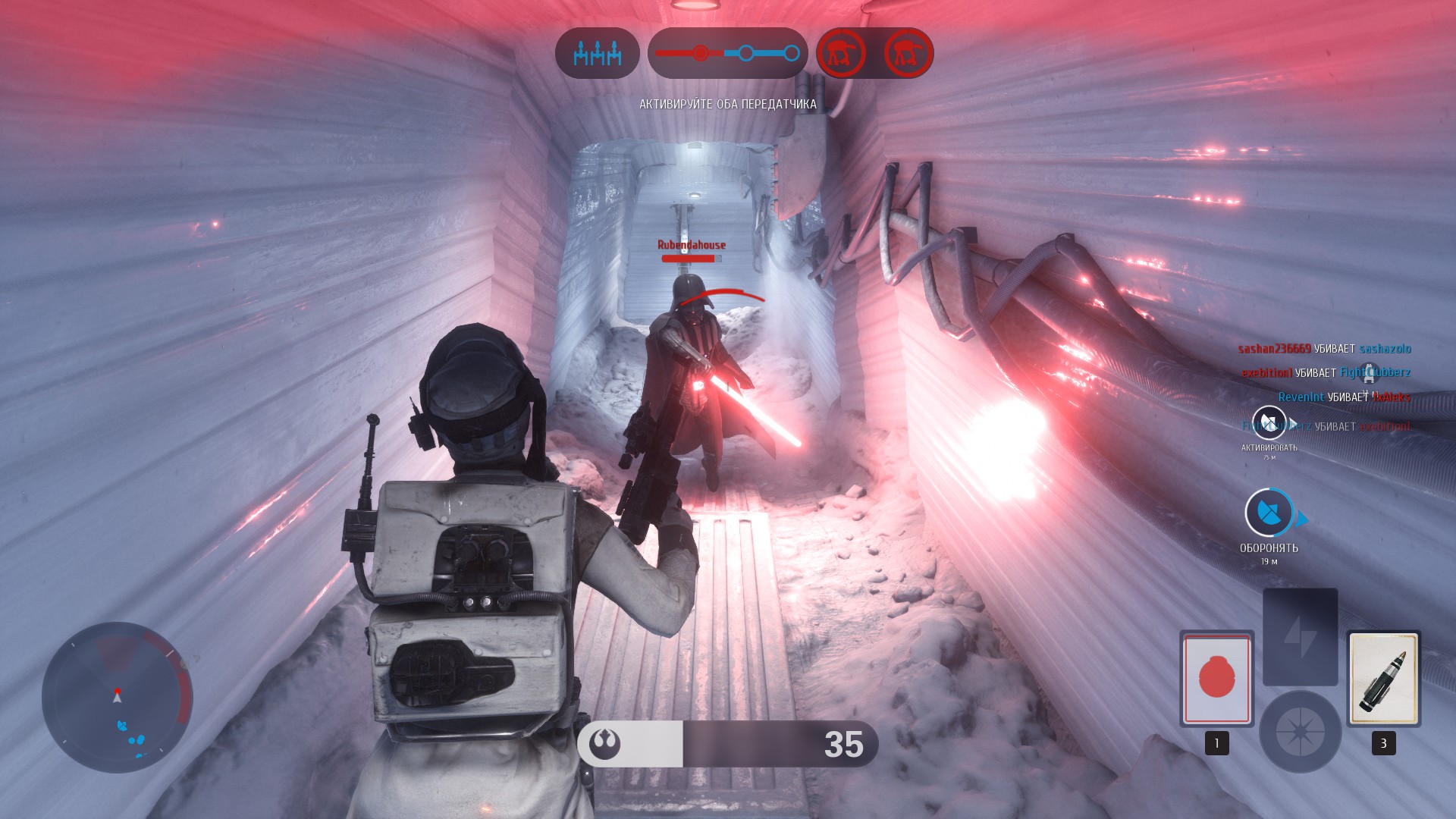
Finally, let’s talk about the amount of content. Yes, I was one of those who complained about “four maps,” “cut content for DLC,” and so on. But it’s important not to confuse “little” with “less than desired.” Of course, no one would refuse to have more maps, weapon customization, and playable Jabba, but that doesn’t make the current content any worse.
Currently, Battlefront has four planets (with three to four maps each), and there is no shortage of locations. The large-scale maps are suitable for various scenarios and clearly designed to provide many hours of gameplay, while the smaller maps for indoor modes fulfill their purpose without needing anything more. Moreover, the entire range of content is undeniably good this time, unlike the extensive geography of Battlefield, which ultimately shrinks down to two or three user favorites.
The main intrigue now lies in what the Season Pass will offer. If the content in those packs matches the quality of the original maps, then the game is undoubtedly guaranteed a long and happy life.

Ah, and the localization, of course. The most unpleasant news that playing will have to be in Russian turned out not to be the worst thing: the translation is not flawless, but very good. Even the fear of my entire life – the voice acting – disappeared as soon as I heard the competent dubbing. Moreover, you get used to all sorts of “Vader lords” and adapted names like “SID-Interceptor” faster than expected. Although why this very lord speaks as if we are on a very bad connection in “Skype” is still not clear, but this applies to the original as well, so let’s not complain. But our Boba Fett is wonderful, can’t deny that.
This year, Star Wars fans have two holidays on the street. Battlefront is the best adaptation of the film saga into a multiplayer format today and, hopefully, a confident step towards a truly flawless sequel. While the Force is still not awakened from a ten-year slumber, let’s enjoy.
On the Imperial scale, the game receives such a stormtrooper on Sallast:

Share
Discuss
More Reviews

